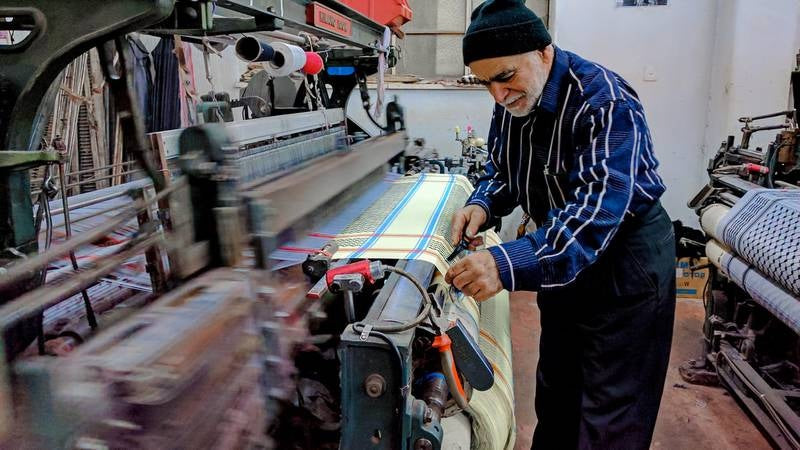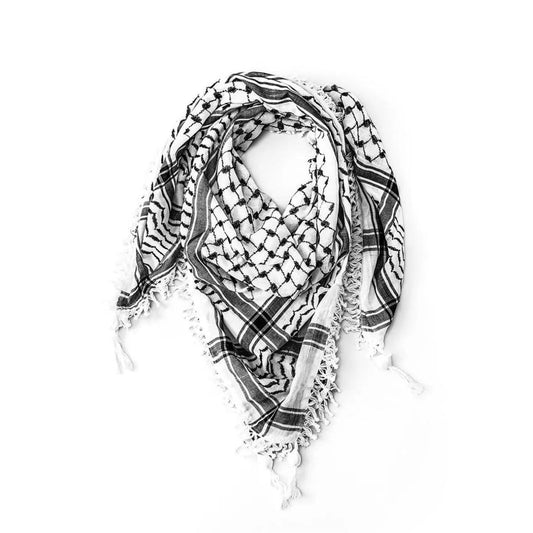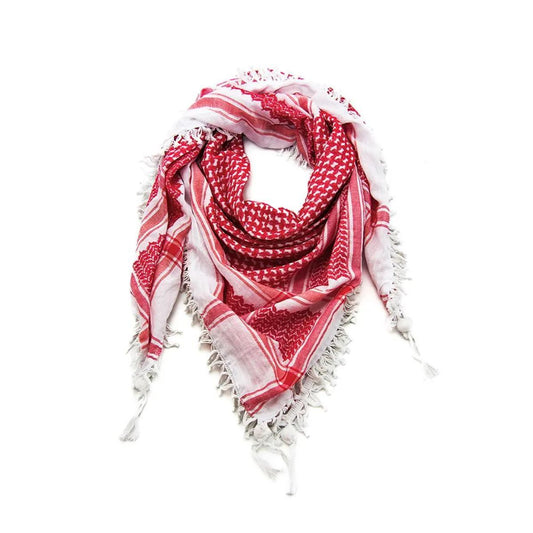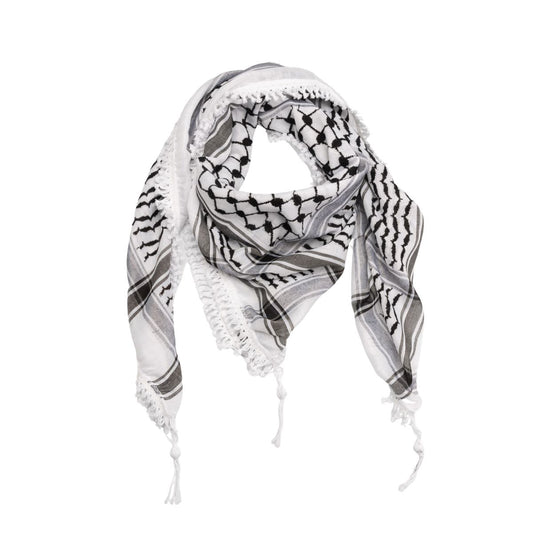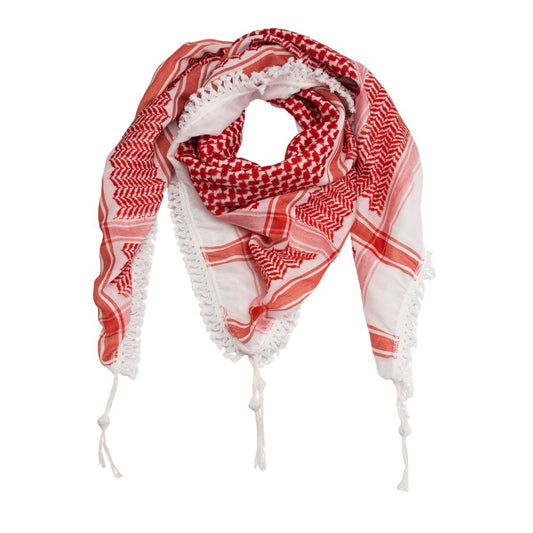Hirbawi Textile Factory
Hirbawi Textile Factory is a small, family-run factory, tucked away in a quiet neighborhood in Hebron, one of Palestine’s largest cities. Here, local Palestinian artisans are constantly weaving authentic keffiyehs in many colors and local patterns. The Hirbawi keffiyeh is the only keffiyeh to be authentically made in Palestine, and this factory is the last Palestinian factory keeping the tradition and detailed craft alive. Over the last century, the keffiyeh has become synonymous with the struggle for Palestinian freedom & self-determination, and Hirbawi has become the cultivator of that symbol, and a symbol itself of Palestinian steadfastness.
Each Palestinian keffiyeh is handmade using a specific cross-stitching technique developed over decades. Traditionally, the keffiyeh is woven on two layers, the “base”, and the “pattern” or “flower” ( وردة) in Arabic. The looms must be monitored and adjusted constantly, and the threads between the patterns are cut manually while the machine is running. After a roll of keffiyehs is woven on the machines, they are sewn individually and tassels added. Each keffiyeh takes up to an hour to produce, and only a handful of people still know these techniques that were honed over time, through many generations.
The Hirbawi Textile factory has kept these techniques alive since it was started in 1961 by Yasser Hirbawi. It took Yasser nine years to learn the art of weaving keffiyehs with the large and complex industrial looms, and he passed on his skills to his sons. They carry on the tradition, making sure the craft continued to survive even after their father passed away in 2018.
While he was alive, Yasser Hirbawi described his struggle to compete with cheaper keffiyeh producers across the globe. Due to an increase in overseas low-cost manufacture, most keffiyehs seen today no longer hold ties to the land they come from and are not made with traditional techniques. Following the signing of the 1993 Oslo Accords and the adoption of a free-market policy, the import of low-cost keffiyehs began to flood markets worldwide. Since then, the growing competitive pressure of mass-produced alternatives have been hurting local Palestinian weavers.
On top of cheaper global competition, the Israeli occupation, Israeli checkpoints and roadblocks have made it even more difficult for Palestinian small businesses, especially in Hebron where violence between settlers, Israeli soldiers and Palestinian residents defines everyday life. Hirbawi Textile Factory is the last factory in Palestine that produces Palestinian keffiyehs, but it has not been easy for them to stay open.
The traditional black and white keffiyeh is often referred to as the unofficial Palestinian flag. The patterns are said to represent a fishing net, trade routes, olive leaves, a honeycomb, the joining of hands, or the marks of dirt and sweat wiped off a worker's brow. Hirbawi produces both the traditional keffiyeh, and keffiyehs in different colors that are inspired by various Palestinian cities and the heritage of Palestine.
Adopted by freedom fighters in the 1930s Arab Revolt, the keffiyeh became the uniform of Palestinian revolutionaries in their resistance against the occupation of the British Empire. Wearing the keffiyeh has now become an expression of resistance against injustices of all kinds, and a way to express solidarity not only with the Palestinian people, but with all people who are fighting for rights that are stolen from them. It is worn with pride and carries deep meaning for those who wear it.
Resources:
https://hirbawiusa.com/pages/the-last-factory
From Hirbawi’s Blog:

